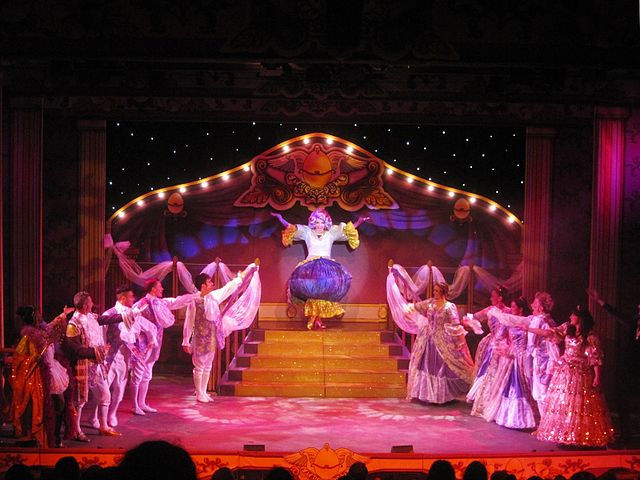 Pantomime has received a facelift in recent years, a “rags to riches” transformation. The 80s and 90s saw a gradual decline in quality, and pantomime was regarded as a cheap entertainment option with some glitter to cover the cracks. Some of regional repertories and smaller companies kept the magic alive and reinvigorated it, however audiences began to demand better and slowly pantomime began to improve.
Pantomime has received a facelift in recent years, a “rags to riches” transformation. The 80s and 90s saw a gradual decline in quality, and pantomime was regarded as a cheap entertainment option with some glitter to cover the cracks. Some of regional repertories and smaller companies kept the magic alive and reinvigorated it, however audiences began to demand better and slowly pantomime began to improve.
Pantomime is best when created with love and care, each made with a personal, relative method for the audience to connect to. Each production is particular to each audience in each town the pantomime plays in. The more personal the connection the better, so jokes and references are included that only the audience would relate to. The script ultimately pulls the strings of the pantomime together.
Before everything begins, sets, costumes and props are stored away from the previous year’s production and the work begins for the following year. The ‘big name’ is the first essential part of the pantomime, with their name being the attraction to most pantomime audiences. The star must bring a little bit extra that ensures that they can create a special kind of magic that connects with adults and children alike.
Keeping the writing fresh is important, followed by photo shoots, set building, music composition and then casting. Another key member of the team is the dame, which differs greatly between producing companies. For pantomime there must be pretence without pretence: everyone is ‘in’ on the joke but doesn’t give it away. Pantomime is a lot about illusion with no illusion: there is magic but the magic must be transparently human.
From there the rehearsals begin, set is built, sequins are sewed, and there are orchestra calls, choreography sessions, marketing and publicity, front of house dressing, all until the show begins!
Image courtesy of Wikimedia Commons.

 Making a ballet tutu can be a very rewarding experience. To see your costumes on stage after a long process of creating them creates feelings of pride and accomplishment, following carefully sewing on hooks and eyes, and creating layers and layers for the finished product.
Making a ballet tutu can be a very rewarding experience. To see your costumes on stage after a long process of creating them creates feelings of pride and accomplishment, following carefully sewing on hooks and eyes, and creating layers and layers for the finished product. It has been rumoured that West End star Kerry Ellis is set to take over the role of Grizabella from pop princess Nicole Scherzinger in Cats at the London Palladium in 2015, a huge theatrical coup for musical theatre fans. Scherzinger has previously received mixed reactions from musical theatre-goers however for many, the most important aspect of the news is that Cats will most likely be extending further than it’s previously advertised 12 week run.
It has been rumoured that West End star Kerry Ellis is set to take over the role of Grizabella from pop princess Nicole Scherzinger in Cats at the London Palladium in 2015, a huge theatrical coup for musical theatre fans. Scherzinger has previously received mixed reactions from musical theatre-goers however for many, the most important aspect of the news is that Cats will most likely be extending further than it’s previously advertised 12 week run. It has been revealed that Imelda Staunton will reprise her role as the iconic Momma Rose in Chichester Festival Theatre’s hit production of Gypsy when it transfers to the West End for a strictly limited season in spring 2015. This will be the first London production of Stephen Sondheim’s much-loved musical for more than 40 years, playing at the Savoy Theatre from 28 March.
It has been revealed that Imelda Staunton will reprise her role as the iconic Momma Rose in Chichester Festival Theatre’s hit production of Gypsy when it transfers to the West End for a strictly limited season in spring 2015. This will be the first London production of Stephen Sondheim’s much-loved musical for more than 40 years, playing at the Savoy Theatre from 28 March.